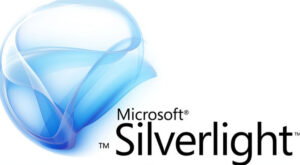
Red Hat Linux, one of the most iconic names in the world of open-source software, has a history rooted in the early days of the Linux movement. Founded in 1993 by Marc Ewing and Bob Young, Red Hat emerged as a trailblazer in the realm of Linux-based operating systems. This article delves into the beginnings of Red Hat Linux, its journey to prominence, and its impact on the open-source software community.
The Origins of Red Hat
Red Hat Linux traces its origins to the personal project of Marc Ewing, a student at Carnegie Mellon University. Ewing had a knack for tweaking the configuration files in the Slackware Linux distribution to create his customized version. His decision to wear a red Cornell lacrosse cap (given to him by his grandfather) while working on the project led to the name “Red Hat Linux.”
In 1994, Bob Young, a businessman and entrepreneur, recognized the potential of Ewing’s project. He contacted Ewing and proposed a partnership to commercialize and distribute Red Hat Linux. This partnership laid the foundation for the Red Hat Software company.
Key Milestones in the Red Hat Linux Journey
- Red Hat Linux 1.0 (1994): Red Hat Software released its first commercial product, Red Hat Linux 1.0. This early version was primarily a repackaging of Slackware with some enhancements and user-friendly features.
- RPM Package Manager: Red Hat introduced the RPM (Red Hat Package Manager) package format, which improved software management and made it easier to install, upgrade, and manage applications on Linux systems.
- Enterprise Focus: Red Hat shifted its focus from being just another Linux distribution to targeting the enterprise market. This strategic move set the stage for its future success.
- Red Hat Enterprise Linux (RHEL) (2002): Red Hat introduced Red Hat Enterprise Linux, a distribution specifically tailored for enterprise environments. RHEL brought enhanced stability, long-term support, and a subscription-based model to the enterprise market.
- IPO (1999): In a groundbreaking move, Red Hat became the first open-source company to go public, marking a significant moment in the open-source industry’s evolution.
- Acquisition of JBoss (2006): Red Hat’s acquisition of JBoss, a prominent open-source middleware company, expanded its enterprise offerings and solidified its position as a comprehensive open-source solutions provider.
- Community Engagement: Throughout its history, Red Hat has maintained strong connections with the open-source community.
Impact on Open Source and Enterprise Software
Red Hat Linux’s journey from a personal project to an enterprise powerhouse had a profound impact on open source and enterprise software:
- Open Source Credibility: Red Hat’s commitment to open source demonstrated the viability of open-source business models, earning respect and credibility for the open-source community.
- Enterprise Adoption: Red Hat Enterprise Linux became a go-to choice for businesses, governments, and organizations that required a stable, secure, and well-supported operating system.
- Business Model Innovation: Red Hat’s subscription-based business model for enterprise software support and services set a precedent for other open-source companies.
Conclusion
The beginning of Red Hat Linux represents the entrepreneurial spirit and innovation at the heart of the open-source movement. From its humble origins as a custom Linux distribution to becoming a leader in enterprise open-source solutions, Red Hat’s journey has left an indelible mark on the world of open source and enterprise software. Red Hat Linux remains a testament to the power of community collaboration, open-source values, and the enduring relevance of Linux in the modern tech landscape.



